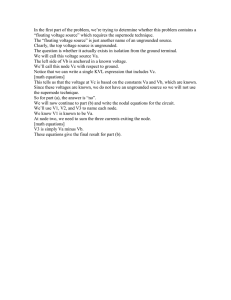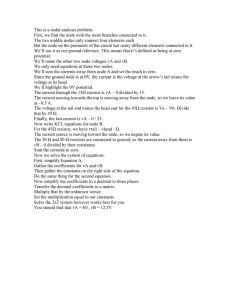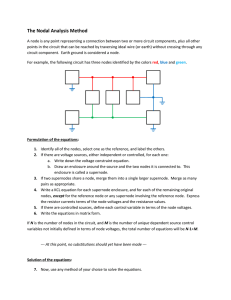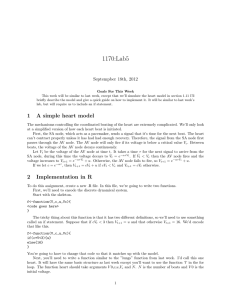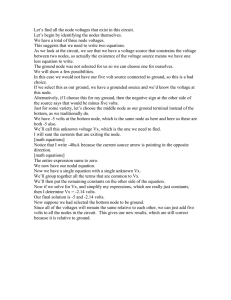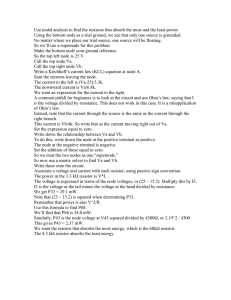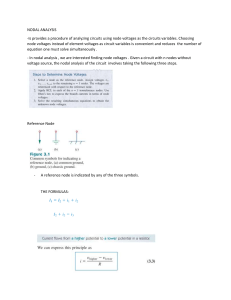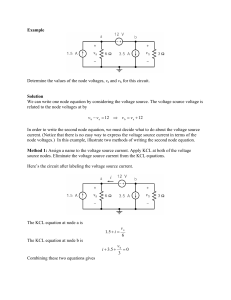+ – R5 V2
advertisement
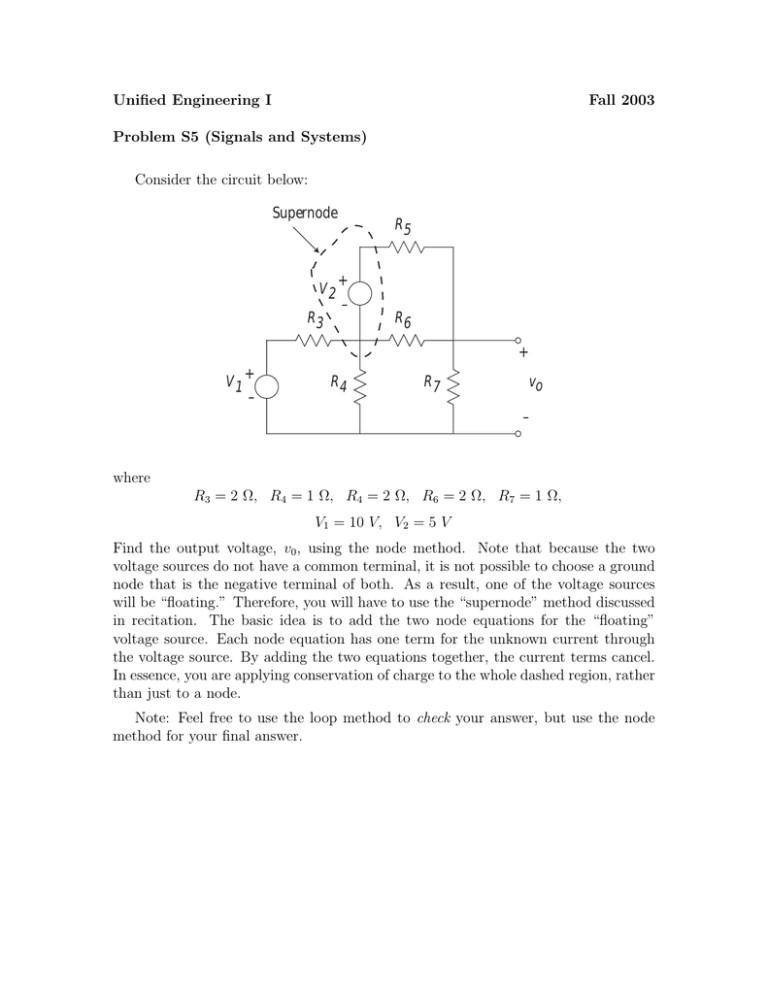
Unified Engineering I Fall 2003 Problem S5 (Signals and Systems) Consider the circuit below: Supernode V2 R3 R5 + – R6 + V1 + – R4 R7 vo – where R3 = 2 Ω, R4 = 1 Ω, R4 = 2 Ω, R6 = 2 Ω, R7 = 1 Ω, V1 = 10 V, V2 = 5 V Find the output voltage, v0 , using the node method. Note that because the two voltage sources do not have a common terminal, it is not possible to choose a ground node that is the negative terminal of both. As a result, one of the voltage sources will be “floating.” Therefore, you will have to use the “supernode” method discussed in recitation. The basic idea is to add the two node equations for the “floating” voltage source. Each node equation has one term for the unknown current through the voltage source. By adding the two equations together, the current terms cancel. In essence, you are applying conservation of charge to the whole dashed region, rather than just to a node. Note: Feel free to use the loop method to check your answer, but use the node method for your final answer.

